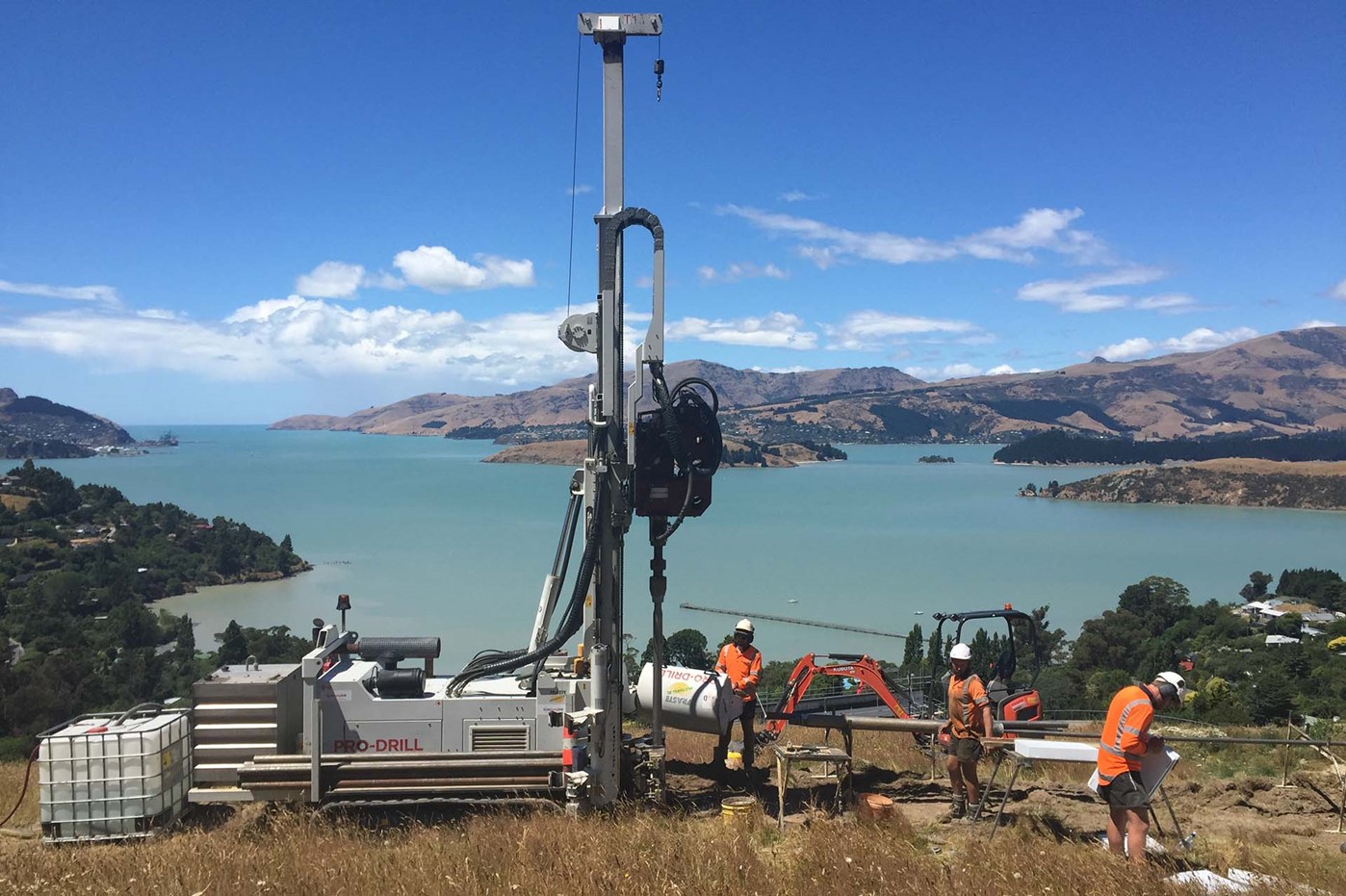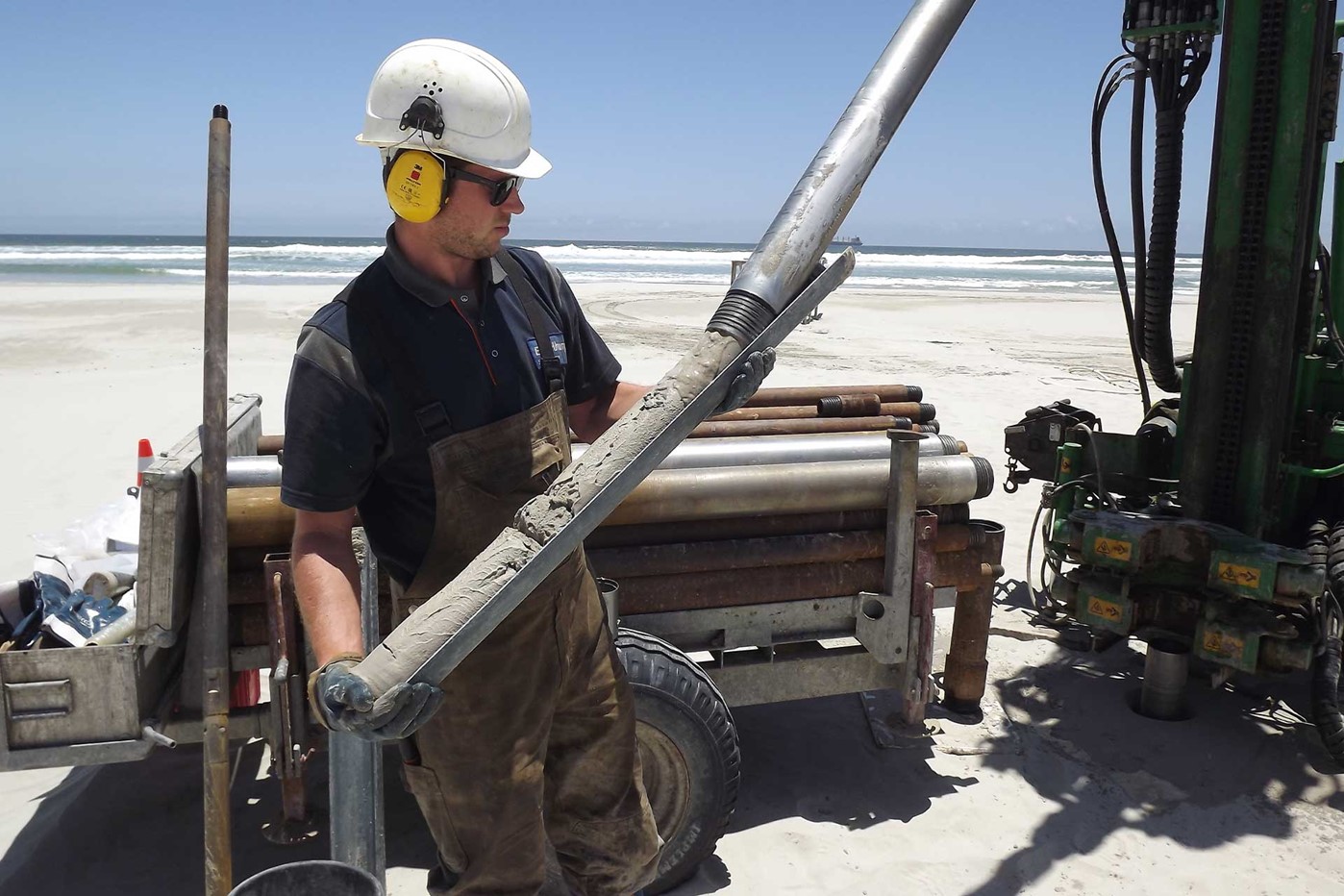
Sonic drilling is a technique that significantly reduces friction on the drill string and drill bit by using energy resonance to affect the soil structure where it contacts the drill string. This combination makes penetrating for a large range of soils much easier. Sonic drilling is most often used when the drilling is difficult and the integrity of the core sample is extremely important.
Sonic drilling uses high-frequency vibration (resonance) to reduce friction and advance the drill string and bit where surrounding particles are either liquified (in loose materials) or fractured (in hard rock). Rotation can also be added when drilling in harder geologic formations.
The resonate energy is generated inside the sonic head with two counter-rotating weights called eccentrics. One turns clockwise, and one turns counterclockwise, with both weights moving up to 9,000 revolutions per minute.
Sonic vibrations cause liquefaction (or fluidization) of alluvial soils just right at the point of contact where the soil encounters the drill head and entire string. This minimal effect enables excellent and continuous soil sampling through difficult layers such as overburden and other unconsolidated soils.
While harder rock layers may require a strong drill head and rotation along with the sonic vibration, drilling through these layers still allows the sonic energy to greatly reduce the impact of friction.
Typical steps for sonic drilling include:
There are many reasons sonic drilling is so successful and effective, but we’ll break them into six key benefits:

Here are a few of the markets where sonic drilling is commonly used. Note that this is not a comprehensive list!